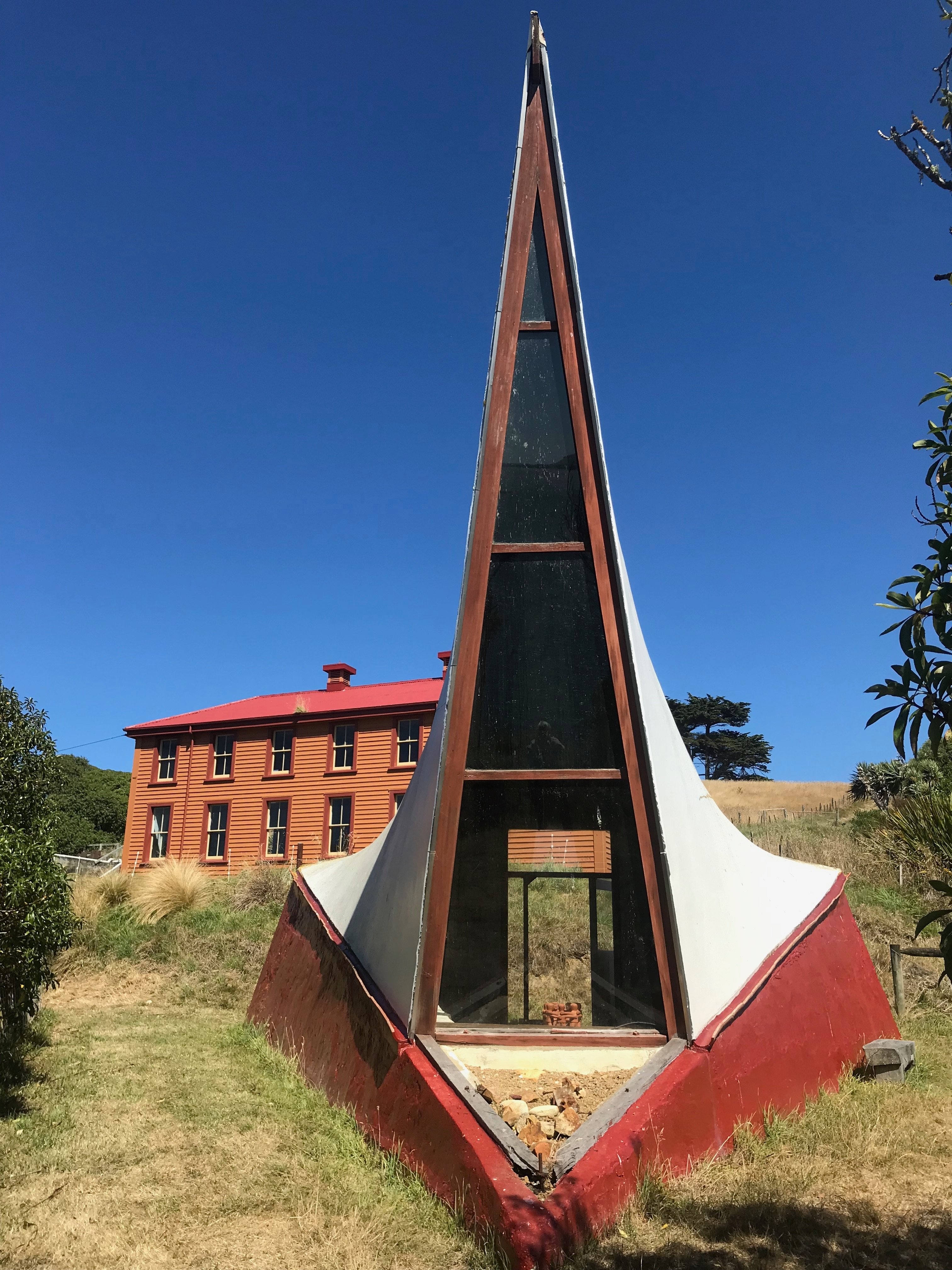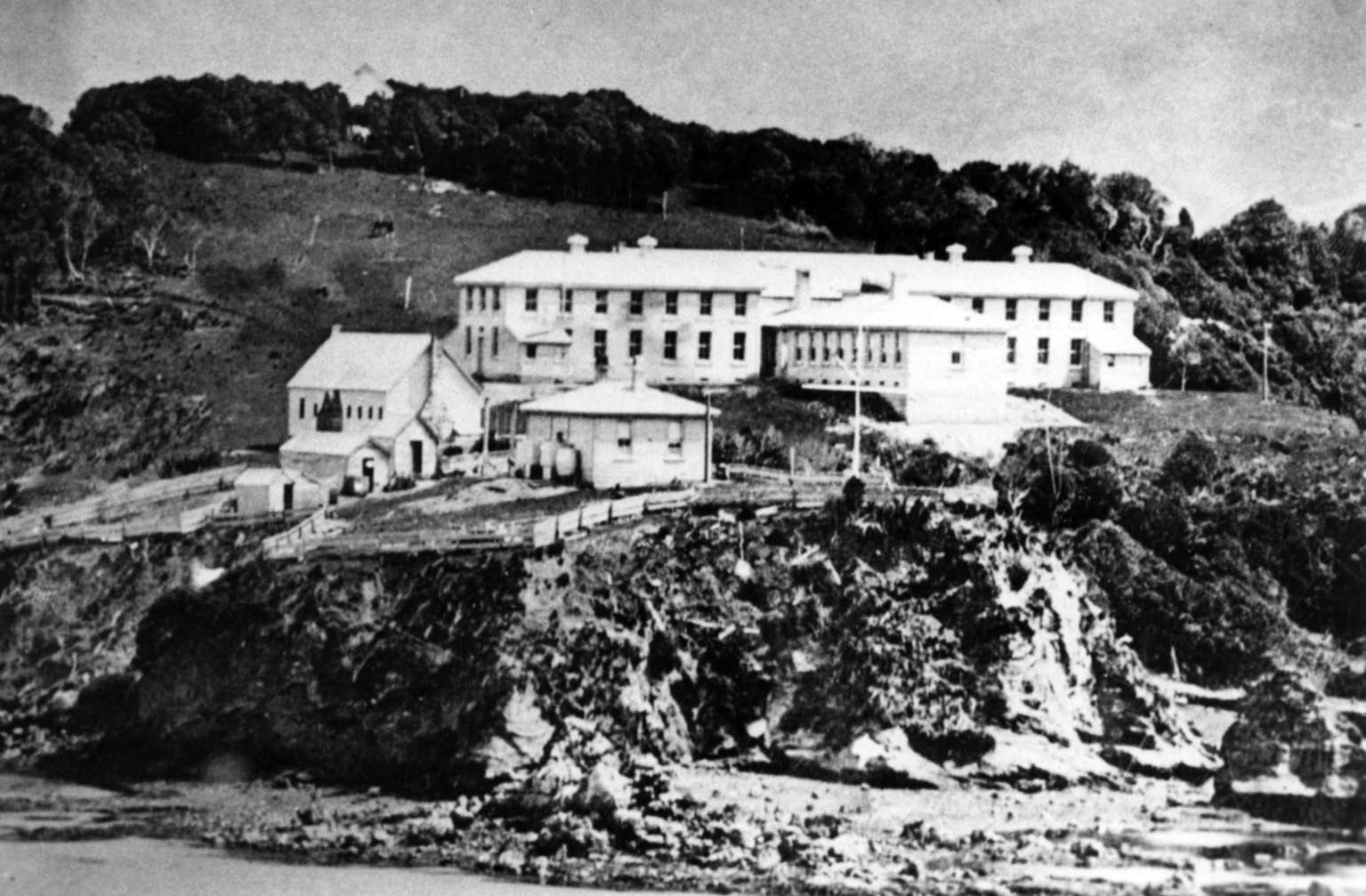The first Quarantine station was built on the island in 1861 but not used until 1863. It was closed in 1924. There were two main quarantine periods (the 1870s and WW1). A brochure and map of key points are available. Printed copies can be obtained on the Island.
Immigration Period – 1861 to 1915
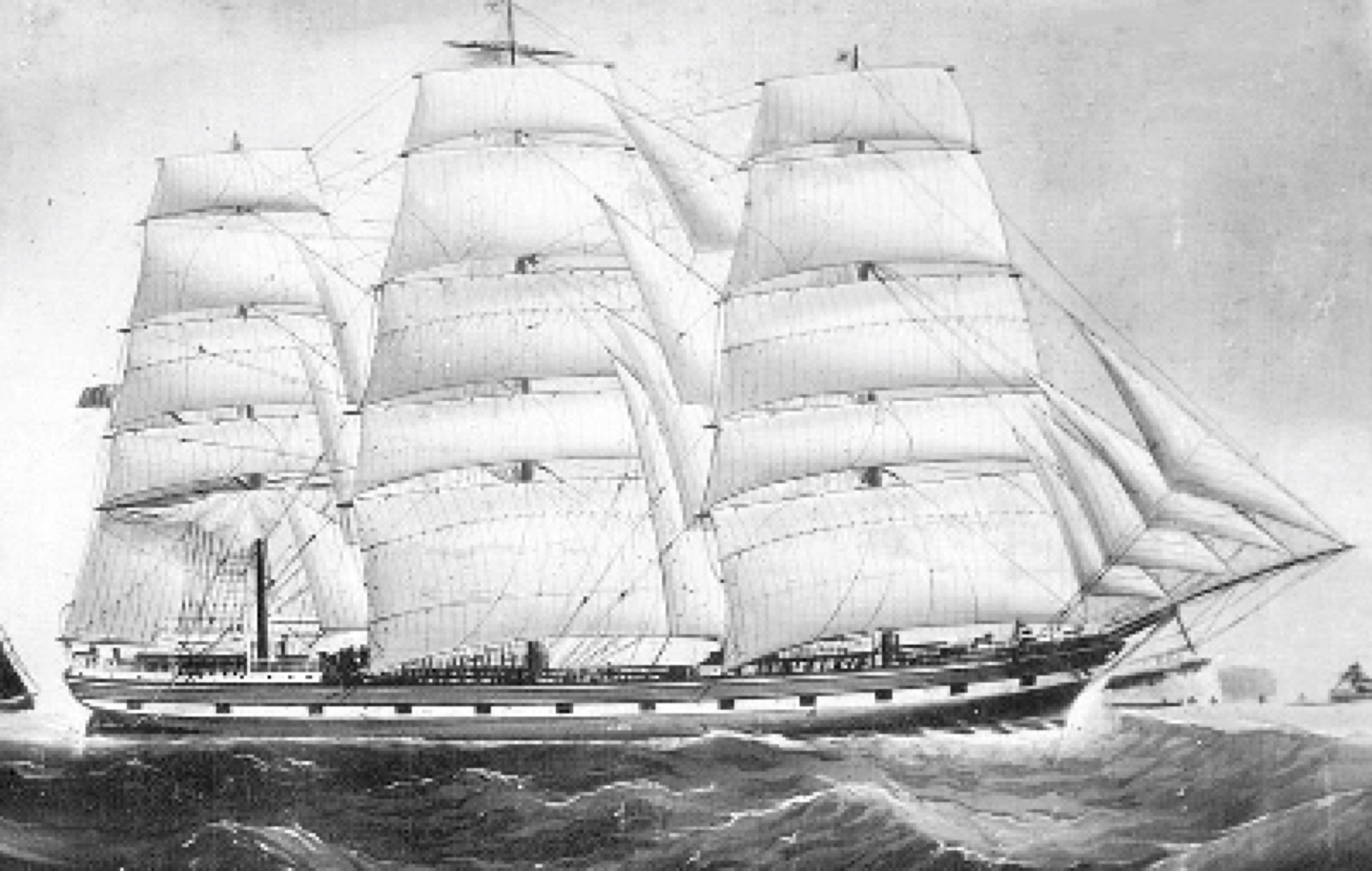
(State Library of Victoria)
The first two buildings were built in clearings in the bush in 1861 (see painting below).
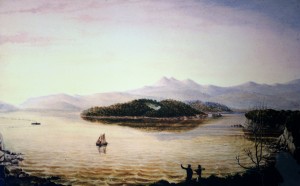
The major buildings were completed in 1873 (top photo). A description of the facilities on the Island was published in June 1874. There are ongoing efforts to save, and partially restore, part of this station, the ‘Married Quarters’.
The building represents an important part of Otago’s and New Zealand’s history and is one of only two 19th century, offshore Quarantine station dormitory buildings remaining in New Zealand.
It was the first ‘home’ in New Zealand for many settlers who arrived during the late 19th century on ships that were quarantined due to illness on board, and is also a tangible reminder of the souls who died while there in quarantine, who are buried on the island. It and other remnants of the Quarantine station can be visited.
There were 41 ships in quarantine over the years, in total about 9000 people. At least 72 people died in quarantine and are buried in the cemetery. The names and cause of death of 62 are known, however most graves are unmarked.
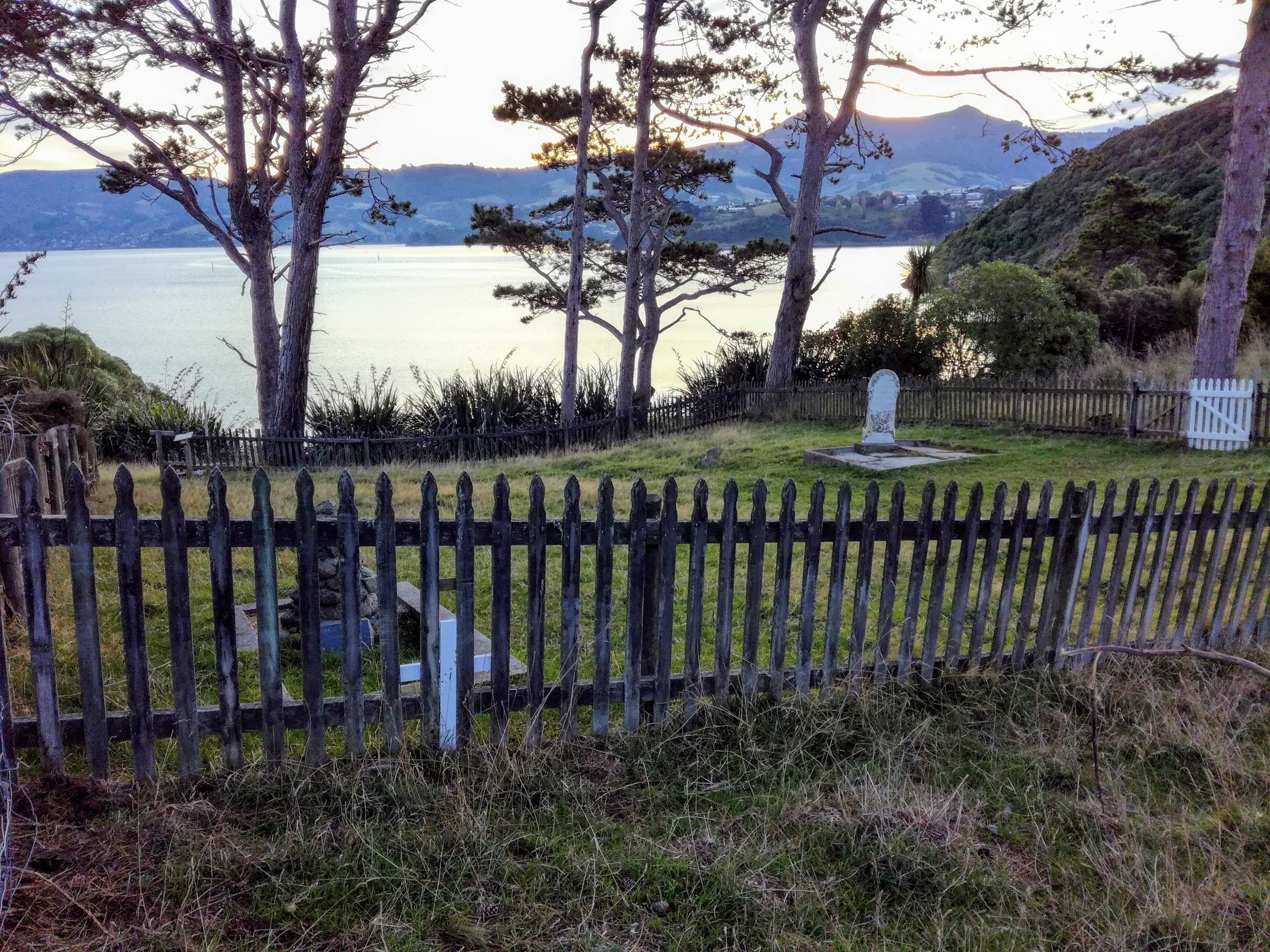
The list of ships and causes of death is available in appendices in QI A Short History, and here. Every ship and immigrant has a story, most ships were grand clippers of the 1860s-1890s (see photo above). For example the Dunedin played a prominent role in NZ’s history.
Notable people in quarantine included, Brogdenites (come to build Otago’s railways), Celestials (Chinese workers come to dig for gold) as well as Polish refugees. The last ship from this period was quarantined in 1902, but the Dougall family maintained the station until 1924.
Further Reading and Links
For an in-depth telling of the Island’s rich history, you can read ‘Quarantine Island/Kamau Taurua (St Martin Island)- A Short History‘ by Lyndall Hancock (published by St Martin Island Community, 2008). It is currently out of print but copies may be available from Dunedin Public Library or online book sellers. In 2023, Quarantine Island/Kamau Taurua Community Inc. Council helped facilitate a small revised reprint of the book with help from Kristen Bracey and Chris Brown. If you are interested in owning a copy email secretary.quarantineisland@gmail.com.
NZ Quarantine stations, Te Ara NZ
NZ Epidemics Typhoid, Smallpox, Te Ara NZ
NZ Immigration, Story: History of Immigration
Te Ara NZ Quarantine Island Cemetery and Epidemics from the Historic Cemeteries conservation trust (links to pdf near bottom of page)
VD in WW1 Ettie Rout (TV3 video)
Account of the long and tragic voyage of the German ship ‘Palmerston’ in 1872 from Hamburg with people from Poland/Germany and Scandinavia/Denmark. These people were some of the first refugees coming to NZ, fleeing oppression under German occupation. Link and also as a pdf)
An account from Charles Duke the person in charge of stores while the Christian McAusland was in quarantine 1872-1873 (Charles Duke Diary 1872)
Books
Bateman NZ Historical atlas plate 49, The Long Journey. A nice graphic of the immigration route and immigrants makeup by sex, age, region,etc.

